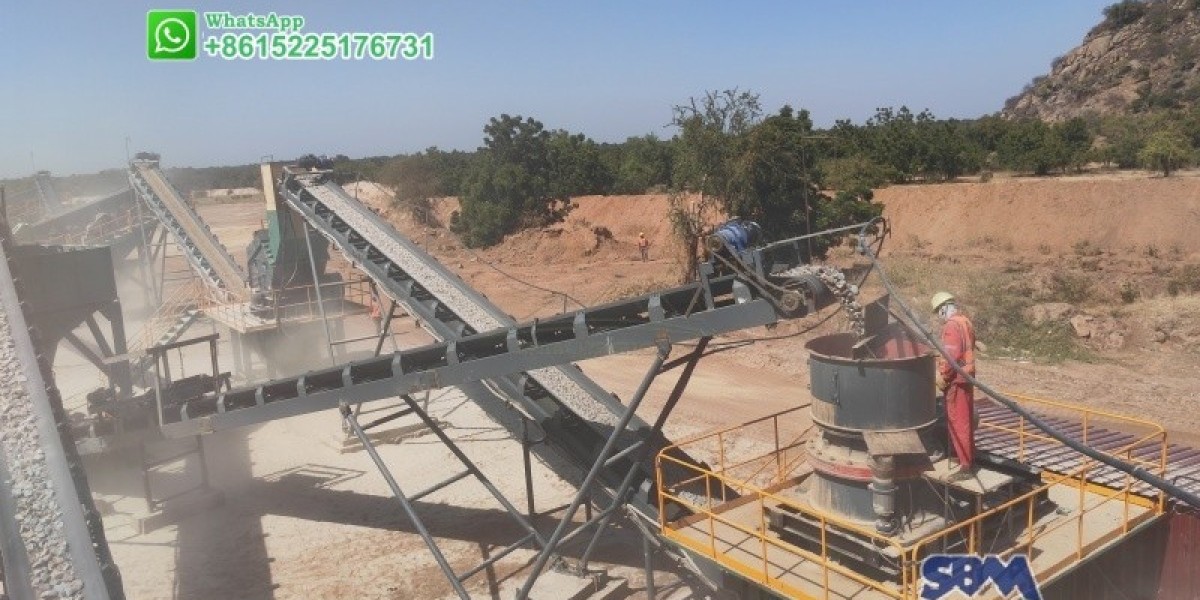A stone crusher is a machine designed to reduce large rocks into smaller rocks, gravel, sand, or rock dust. It's a fundamental piece of equipment in mining, construction, quarrying, and recycling industries.
Here's a breakdown of what it is and how it works:
Core Function:
Size Reduction: Its primary purpose is to break down large boulders, rocks, or concrete debris into much smaller pieces of a desired size.
Production of Aggregate: The crushed material (called aggregate) is essential raw material for construction and infrastructure projects.
Why Crush Stone?
To create usable materials like gravel, sand, and crushed stone for:
Road bases and asphalt
Concrete production
Railway ballast
Building foundations and landscaping
Drainage systems
Manufactured sand
To extract valuable minerals from ore in mining.
To recycle concrete, asphalt, and demolition waste.
How It Works (Basic Principle):
Stone crushers apply mechanical force to break rocks. This force can be applied in different ways:
Compression: Squeezing rock between two hard surfaces (e.g., jaw crushers, cone crushers).
Impact: Hitting rock with hammers or blow bars at high speed (e.g., impact crushers, hammer mills).
Attrition: Grinding or rubbing rock between surfaces (less common for primary crushing, more for fine grinding).
Shear: Applying a cutting force (less common).
Common Types of Stone Crushers:
Jaw Crusher: The most common primary crusher. Has a fixed jaw and a movable jaw that creates a "V" shape. Rock is fed in and crushed by compression as the movable jaw moves towards the fixed jaw.
Gyratory Crusher: Similar in concept to a jaw crusher but consists of a concave surface and a conical head; both surfaces are lined with manganese steel. Primarily used for high-capacity primary crushing.
Cone Crusher: Used for secondary or tertiary crushing. Rock is fed into the top and crushed between a gyrating spindle and a concave hopper. Excellent for producing finer, more uniform aggregate.
Impact Crusher: Can be used as primary, secondary, or tertiary crushers. Rock is fed into a chamber containing high-speed rotating hammers or blow bars. The rock shatters upon impact with the hammers and against breaker plates. Good for softer rock and producing a more cubical product. Includes Horizontal Shaft Impactors (HSI) and Vertical Shaft Impactors (VSI - often used for shaping and producing sand).
Hammer Mill: Similar to an impact crusher but typically uses hammers pivoted on a central rotor. Often used for softer materials and smaller scale operations.
Roll Crusher: Uses two counter-rotating cylinders to crush material by compression and shear. Used for smaller reduction ratios and friable materials.
Mobile Crushers: Any of the above crusher types mounted on tracks or wheels, allowing them to be moved easily around a site or between sites. Crucial for on-site crushing of demolition waste or in remote quarries.
Key Components:
Feed Hopper: Where the raw material (run-of-mine rock, blasted rock, concrete rubble) is loaded.
Crushing Chamber: The area where the actual size reduction happens (contains jaws, cones, hammers, anvils, etc.).
Drive System: Engine or electric motor providing power.
Crushing Elements: Jaws, mantles, concaves, hammers, blow bars, liners – made of very hard wear-resistant materials (manganese steel).
Discharge Conveyor: Transports the crushed material away from the crusher.
Screening Unit (often integrated): Screens separate the crushed material into different size fractions before or after crushing stages. Often part of a "crushing plant" alongside crushers.
Stages of Crushing:
Primary Crushing: First stage, breaks down the largest rocks (often to ~6-10 inches). Jaw or gyratory crushers are typical.
Secondary Crushing: Further reduces the size (often to ~1-3 inches). Cone crushers or impact crushers are common.
Tertiary/Quaternary Crushing: Produces the final, finer aggregate sizes (sand, chips). Cone crushers or VSI crushers are often used.
In essence: A stone crusher is a powerful machine that uses mechanical force to transform large, unusable rocks into smaller, valuable construction materials essential for building the world around us.
More Information on my website. You can search on search engines: SBM Mill & Crusher








